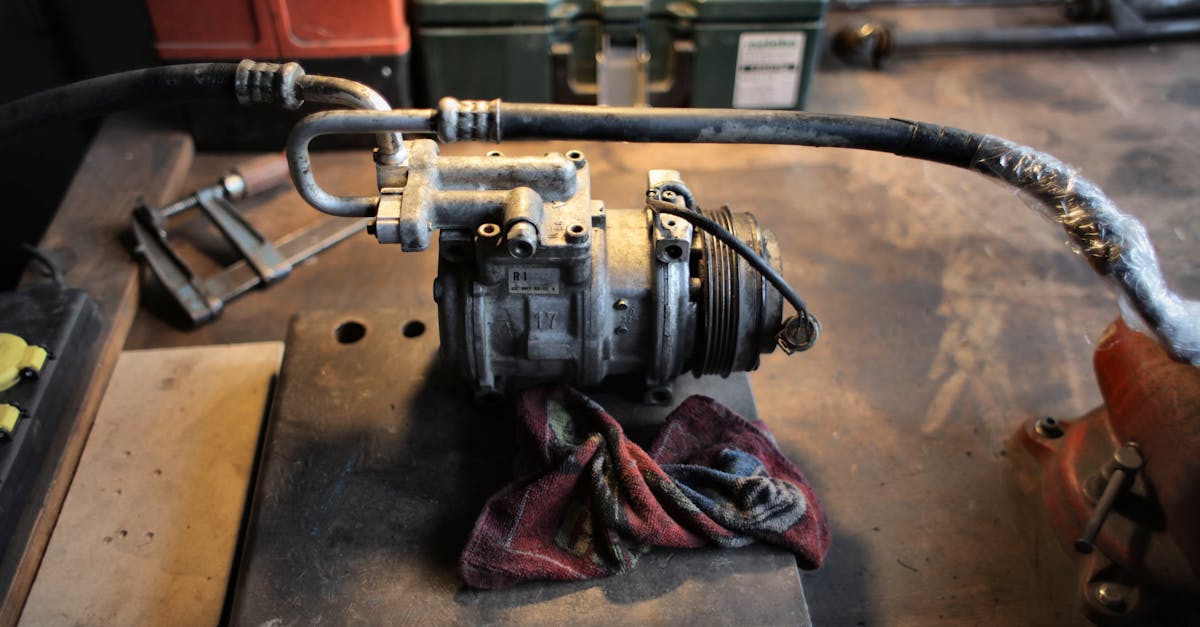
Troubleshooting Common Issues with Evaporator Coils in Split Systems
Table Of Contents
Regular maintenance is key to preventing evaporator coil malfunctions in split systems. One crucial step is to frequently check and change air filters. Clogged filters can restrict airflow, causing the coil to freeze and reducing the system's efficiency. It is recommended to inspect filters every one to three months, depending on usage, and replace them as needed to ensure optimal performance of the evaporator coil.
In addition to changing air filters, another preventive measure is to schedule annual professional maintenance for the split system. A trained technician can inspect the evaporator coil for any signs of dirt or debris buildup, as well as check for refrigerant leaks and ensure proper condensate drainage. By proactively addressing these potential issues, homeowners can extend the lifespan of their system and avoid costly repairs in the future.
Importance of Changing Air Filters Regularly
Changing air filters regularly is a simple yet crucial maintenance task for ensuring the optimal performance of evaporator coils in split systems. When air filters are clogged with dust, dirt, and debris, airflow is restricted, causing the evaporator coils to work harder to cool the air. This not only reduces the efficiency of the cooling system but also puts additional strain on the compressor, potentially leading to premature failure.
rator coils, it is essential to maintain regular inspections and cleanings. Ensuring that the drain lines are free from debris, algae, and mold build-up is crucial for the proper functioning of the system. Blockages in the drain lines can lead to water leakage, reduced cooling efficiency, and potential damage to the system components.
Regular maintenance of the condensate drain lines can be easily incorporated into a routine HVAC servicing schedule. By conducting simple checks and cleanings at regular intervals, homeowners can avoid the inconvenience and costs associated with blocked drain lines. Keeping the condensate drain lines clear will not only help in maintaining the efficiency of the system but also extend the lifespan of the evaporator coils in the long run.
FAQS2024-06-14
What are some preventive measures to avoid evaporator coil malfunctions?
Regularly changing air filters, scheduling routine maintenance checks, and ensuring proper airflow around the evaporator coils can help prevent malfunctions.
How important is it to change air filters regularly in split system evaporator coils?
Changing air filters regularly is crucial for maintaining the efficiency and longevity of the evaporator coils. Clogged filters can restrict airflow and lead to coil malfunctions.
How can I troubleshoot refrigerant leaks in split system evaporator coils?
If you suspect a refrigerant leak, look for signs such as decreased cooling efficiency, hissing sounds, or ice buildup on the coils. It is recommended to contact a professional for leak detection and repair.
What are the effects of low refrigerant levels on cooling efficiency?
Low refrigerant levels can lead to decreased cooling efficiency, increased energy consumption, and potential damage to the compressor. It is important to address refrigerant leaks promptly to maintain optimal system performance.Table Of Contents
Why is it important to keep drain lines clear to avoid blockages in split system evaporator coils?Installing the Drainage System for Condensation
Clear drain lines are essential for proper condensate drainage from the evaporator coils. Blockages can lead to water overflow, mold growth, and potential damage to the system. Regular maintenance of drain lines is crucial for preventing these issues.
Directing Condensate Water Away from the Unit and the BuildingRelated LinksTesting the Indoor Unit for Proper Functionality
Importance of Regular Maintenance for Evaporator Coil in Split SystemsUnderstanding the Role of Evaporator Coils in Split System Air ConditioningChecking for Proper Temperature Control and Airflow Distribution
The Importance of Proper Sizing and Matching for Evaporator Coils in Split SystemsConducting a Final Inspection and Quality Assurance Check